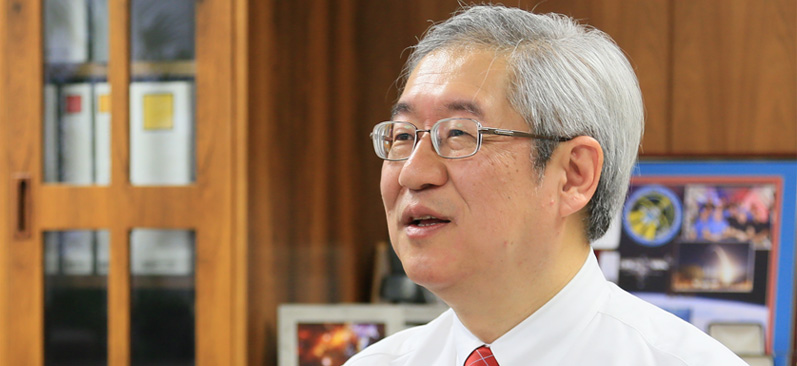Former Director General: Saku TSUNETA

Japan’s space and astronautical science research started with Professor Itokawa’s pencil rocket. This area has seen great progress due to the close collaboration between researchers in the space science and space engineering fields, and joint research activities among Japanese universities.
The Institute of Space and Astronautical Science (ISAS), one of the four principal bodies of Japan Aerospace Exploration Agency (JAXA), has continued to bear the huge responsibility of developing space science via the flying objects of both Japan and the rest of the world.
The aims of ISAS are as follows. Our first aim is to, in cooperation with Japanese universities and research institutes, and space research institutions abroad, propose, develop, test-fly and operate specialty space science missions (science satellites, observation rockets and large balloons). Another important aim of ISAS is to use space science missions to drive academic research.
To date, based on collaboration between researchers in space science and space engineering, ISAS has been successful in making ambitious satellite project proposals, such as “Hayabusa”, into reality.
ISAS has consequently developed into a leading and well-respected research institute on the global space stage. As a platform of active research activities and based on unique collaboration between scientists and engineers, we intend to continue to forge ahead with the generation and execution of significant science satellite projects in the future.
Space satellite and exploration projects will become increasingly bigger and complicated in the future. In order to bring success to these, ISAS will need to support the development of observational equipment led by various universities and external research institutions.
It is also important that we work as one with all of these institutions to make science satellite projects into reality.
We will need to build data centers and science centers outside of ISAS and, along with broadening our base of space and astronautical science, work to further raise space science capabilities throughout Japan.
It goes without saying that ISAS is an indispensable member of JAXA. I sincerely hope that the fruit of ISAS research will lead to the further growth of JAXA and overall space development conducted by Japan.
ISAS is the only organization that can provide academic research in order to contribute to solving the broad range of issues that JAXA and Japanese space development face. We will also be responding to expectations from both within and outside of JAXA for us to act as a think tank in the years to come.
In today’s world, a space satellite project is a mammoth national undertaking that involves politics, economics and international relations. The approach to space science as described in Japan’s Basic Plan on Space Policy reflects this situation. We take our mission very seriously and will be working diligently to contribute to overall space development, including space utilization, by Japan.
Mankind opened the door to space in the twentieth century. The new world, gradually showing us its many faces from behind the door, is undoubtedly beyond anything we have ever imagined. There is, for example, the existence of dark energy and dark matter, the continuous discovery of planets outside of our solar system, and the diverse aspects of planets, satellites and asteroids within our own solar system.
The 21st century will undoubtedly become the century when mankind finally captures a comprehensive picture of the origins of space and life itself. I sincerely hope that the Institute of Space and Astronautical Science will be able to extensively contribute to this grand pursuit of knowledge.
April, 2013
Saku TSUNETA
